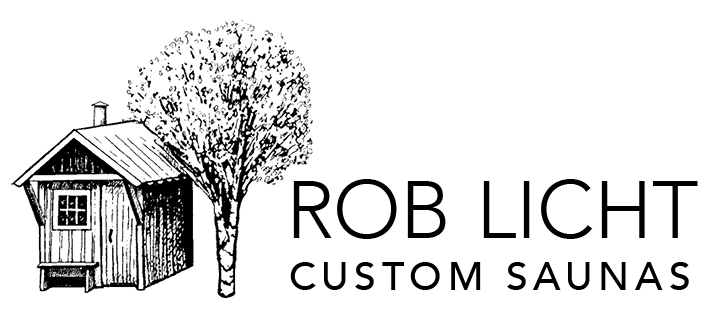
Nov 27, 2017
I get a lot of questions regarding sauna insulating details and thought I’d shed some light on a few issues. A caveat before I start: heat transfer science gets pretty complicated, and I am grossly simplifying things here. I’m not an engineer, I rely on experience and am constantly probing and measuring my own saunas to see what works. A building inspector may want an engineer’s input, but just make sure the engineer understands what happens in a sauna.
If you are building an electric sauna, either in your house or as a stand-alone building, you’ll naturally want to insulate it for efficiency. Normally builders (and building inspectors) think of R-value (printed on every insulation product label) as the golden metric, and the R-values of a wall assembly are typically added up to get a number that either complies with code or satisfies a self imposed trade-off between cost, efficiency and practicality. R-Value is the resistance to heat transfer. But it measures conduction and convection, not radiation, which is not much of a factor at lower temperature differentials. R-values are calculated with normal living spaces and long-term heat retention in mind, which in a typical home is calculated using an average temperature differential of 24°C (between heated and outside space). Since R= Delta T/QA, (where QA is the ability of the material to transfer heat) and in a hot sauna Delta T might be 100°C, the use of labeled R factors is totally skewed!
The second factor is time. Heat loss is measured in BTU/hr. With the sauna only on for a few hours a week (bravo if it’s more!), your heat loss will be minimal, and hopefully, in the cold months it will contribute to heating the house. So, in terms of cost vs. efficiency, a lot of insulation may be overkill.
At the higher temps of the sauna, the radiant effect of heat is more of a factor and the use of a radiant foil barrier comes into play. The heat you feel radiating from a wood stove is the long-wave radiation. This radiation can move through common building materials, but foil stops it dead in it’s tracks. Anyone who has nestled under an emergency blanket or protected themself from the fiery radiation of a blast furnace (like when I pour bronze), understands the effectiveness of foil to bounce radiation back towards the heat source. But if the heat source contacts the foil layer, the aluminum superbly conducts the heat, defeating the purpose. So, when building a sauna, it is the radiant foil layer with an air gap on the hot side that is crucial to holding the heat in. This should be backed by as much standard insulation as is practical, but don’t worry about attaining super R-value. The exception being if the wall is an outside wall of the house and a part of the building envelope. In this case, R-value must be a minimum of what the rest of the house has. I prefer mineral wool, but in any case, do not use XPS or EPS foam directly behind the foil, as they will melt at sauna temps!
Vapor control in an interior sauna is really important especially, in modern tight houses. These structures tend to trap moisture. Vapor can cause damage that you can see, such as peeling paint, but also damage you won’t see, like moisture condensing in a wall cavity. Radiant-foil barrier, when carefully taped at the seams, is also a perfect vapor barrier. When I build interior saunas, I think about all of that moisture and imagine where it can get to and wreak havoc. I then seal off those spaces, provide a vented path for moisture to escape. Some enthusiastic löyly action will turn ladles of water into steam, which fills the sauna and then escapes into the house—like when you forget a kettle on the stove and all your windows fog up. The best thing is to build your sauna next to a shower area and then vent that area with a decent bath fan to the outside or via the household HRV system. The sauna should also have an air intake under the heater, as per manufacturer’s instructions, and via a gap under the door so the sauna gets a healthy exchange of fresh air. Never connect the sauna directly to a mechanical ventilation system.
With careful planning of layout, insulation, ventilation, moisture control, and a heater that makes good löyly, your indoor electric sauna can feel like a wood burner on a pond’s edge and also be an integral part of your efficient home. (Read more about Radiation. Read more about building materials (including foam) at Sauna Insulation, Revisited.)
More Questions? Book a consultation with Rob >











